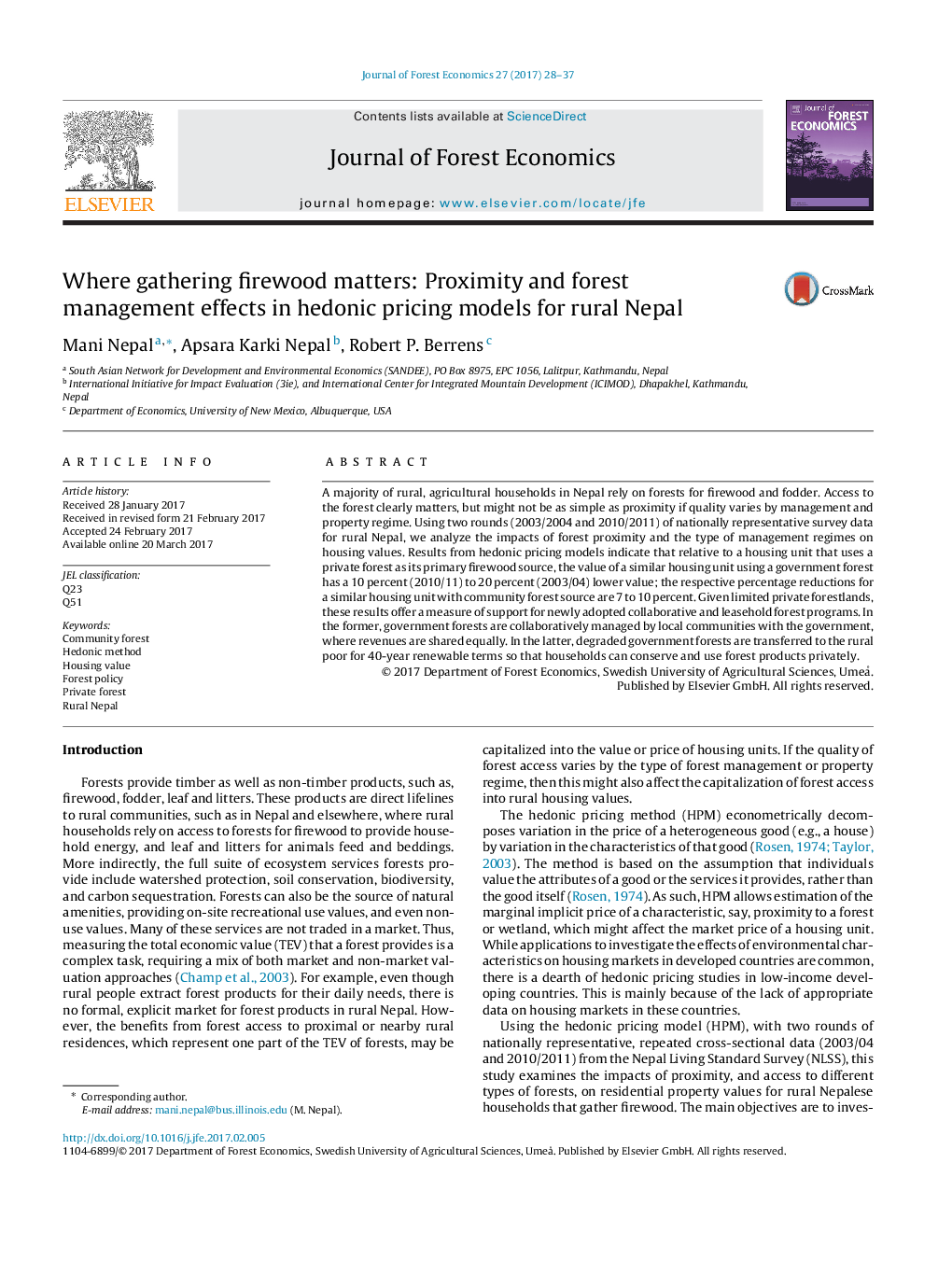| Article ID | Journal | Published Year | Pages | File Type |
|---|---|---|---|---|
| 6459904 | Journal of Forest Economics | 2017 | 10 Pages |
A majority of rural, agricultural households in Nepal rely on forests for firewood and fodder. Access to the forest clearly matters, but might not be as simple as proximity if quality varies by management and property regime. Using two rounds (2003/2004 and 2010/2011) of nationally representative survey data for rural Nepal, we analyze the impacts of forest proximity and the type of management regimes on housing values. Results from hedonic pricing models indicate that relative to a housing unit that uses a private forest as its primary firewood source, the value of a similar housing unit using a government forest has a 10 percent (2010/11) to 20 percent (2003/04) lower value; the respective percentage reductions for a similar housing unit with community forest source are 7 to 10 percent. Given limited private forestlands, these results offer a measure of support for newly adopted collaborative and leasehold forest programs. In the former, government forests are collaboratively managed by local communities with the government, where revenues are shared equally. In the latter, degraded government forests are transferred to the rural poor for 40-year renewable terms so that households can conserve and use forest products privately.
